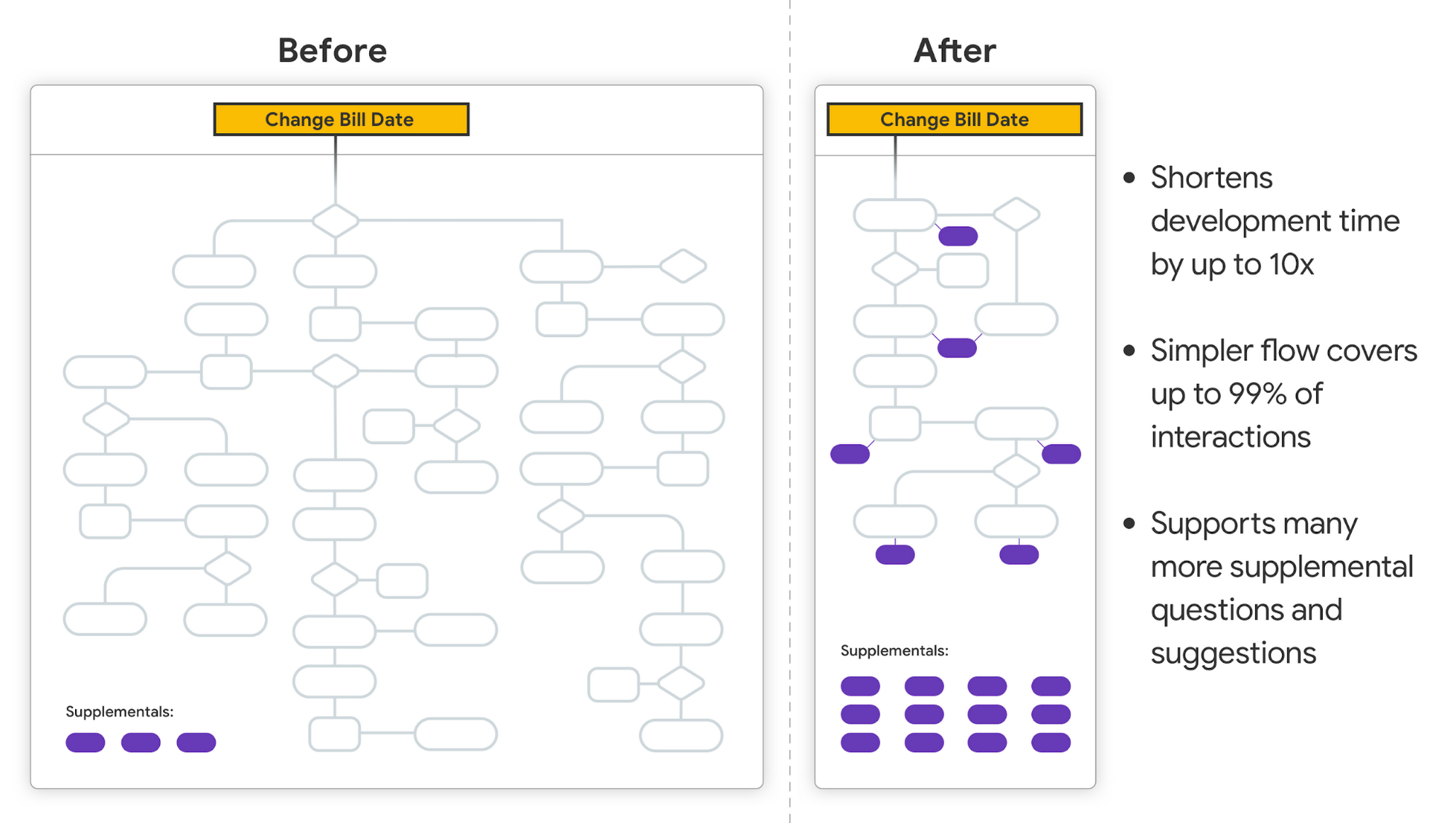Build an AI-powered, customer service virtual agent with Chatbase
Ofer Ronen
GM, Chatbase
These days, most people don’t tolerate more than one or two bad customer service experiences. For contact centers drowning in customer calls and live chats, an AI-powered customer service virtual agent can reduce that risk by complementing humans to provide personalized service 24/7, without queuing or waiting. But the status-quo approach to designing those solutions (i.e., intuition and brainstorming) is slow, based on guesswork, and just scratches the surface on functionality -- usually, causing more harm than good because the customer experience is poor.
Built within Google’s internal incubator called Area 120, Chatbase is a conversational AI platform that replaces the risky status quo approach with a data-driven one based on Google’s world-class machine learning and search capabilities. The results include faster development (by up to 10x) of a more helpful and versatile virtual agent, and happier customers!
Lessons learned along the journey
Initially, Chatbase provided a free-to-use analytics service for measuring and optimizing any AI-powered chatbot. (That product is now called Chatbase Virtual Agent Analytics.) After analyzing hundreds of thousands of bots and billions of messages in our first 18 months of existence, we had two revelations about how to help bot builders in a more impactful way: one, that customer service virtual agents would become the primary use case for the technology; and two, that using ML to glean insights from live-chat transcripts at scale would drastically shorten development time for those agents while creating a better consumer experience. With those lessons learned, Chatbase Virtual Agent Modeling (currently available via an EAP) was born.
Virtual Agent Modeling explained
Virtual Agent Modeling (a component in the Cloud Contact Center AI solution) uses Google’s core strengths in ML and search to analyze thousands of transcripts, categorizing customer issues into “drivers” and then digging deeper to find specific intents (aka customer requests) per driver. For complex intents, Chatbase models simple yet rich flows developers can use to build a voice or chat virtual agent that handles up to 99% of interactions, responds helpfully to follow-up questions, and knows exactly when to do a hand-off to a live agent.


In addition, the semantic search tool finds potentially thousands of training phrases per intent. When this analysis is complete, developers can export results to their virtual agent (via Dialogflow) -- cutting weeks, months, or even years from development time.
Don’t settle for the slow status quo
According to one Fortune 100 company upgrading its customer service virtual agent with Virtual Agent Modeling, “This new approach to virtual agent development moves at 200 mph, compared to 10-20 mph with current solutions.” Furthermore, it expects to nearly double the number of interactions its virtual agent can handle, from 53% of interactions to 92%.
If you have at least 100,000 English-language live-chat transcripts available and plan to deploy or enhance either a voice or chat customer service virtual agent in 2019, Virtual Agent Modeling can help you get into that fast lane. Request your personal demo today!



